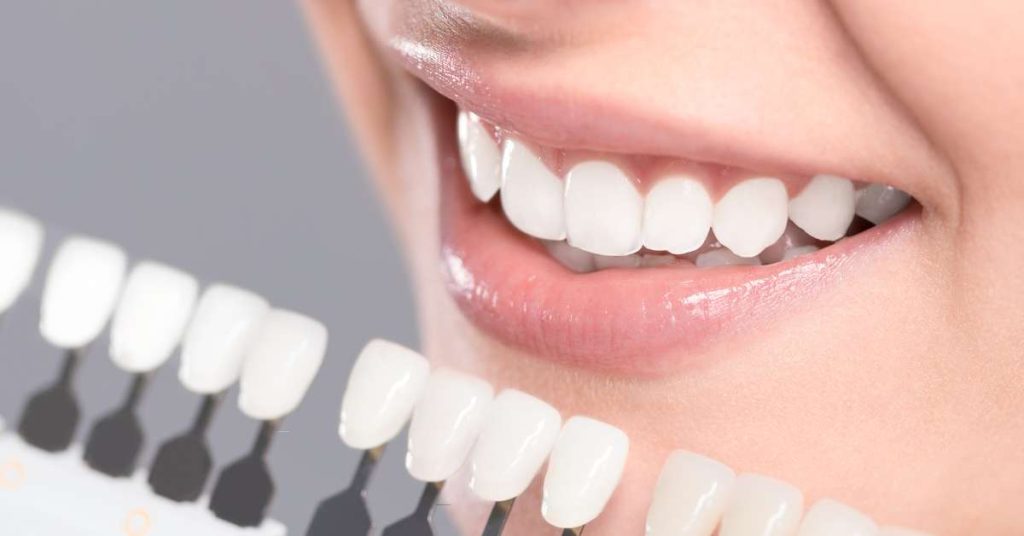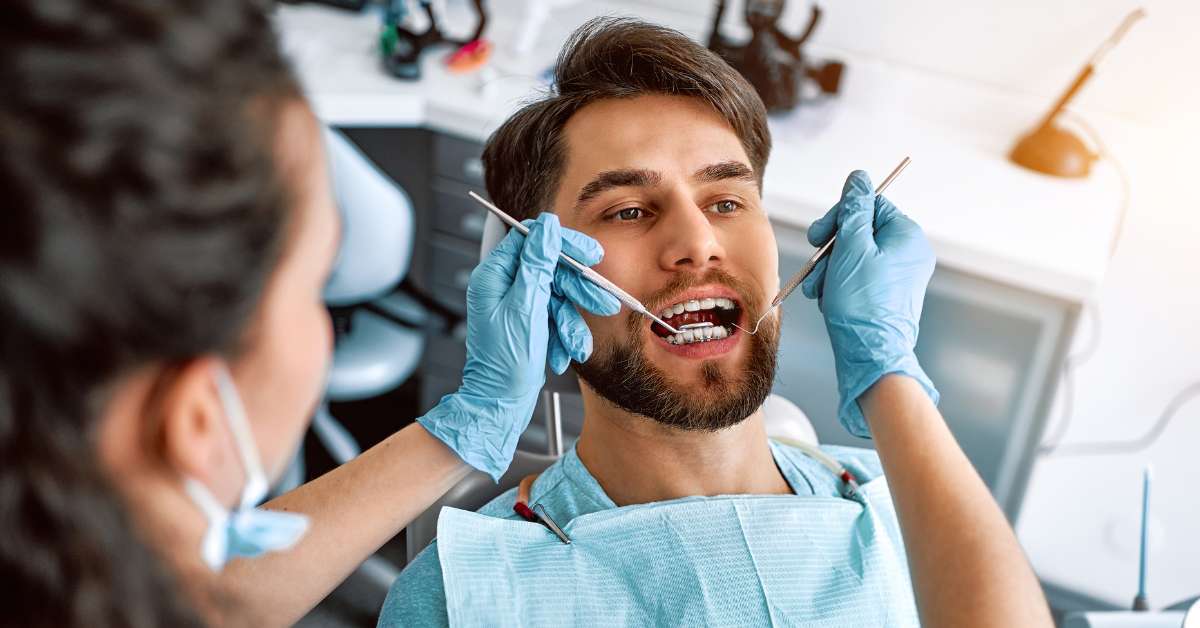Is teeth whitening safe, or just something we’ve been told to trust because it’s everywhere now? It’s understandable that you would want a brighter smile, but not if it means damaging your teeth.
The truth is, whitening can work well when done right. But it’s not for everyone, and it’s not always as simple as slapping on a strip or using a new toothpaste.
If you’re thinking about whitening, this guide will help you figure out what’s smart, what to avoid, and how to protect your teeth in the process.
KEY POINTS
- Whitening is most effective on yellow stains caused by coffee, tea, wine, or natural aging. It won’t work well on teeth with gray, brown, or blotchy discoloration caused by injury, medication, or internal damage.
- You should not whiten if you have untreated cavities, gum disease, or dental restorations on your front teeth. Always check with your dentist first to avoid uneven results or irritation.
Why Do Teeth Change Color in the First Place?
Before you start whitening, it helps to know why your teeth don’t look as white as they used to. Know that not all stains are the same and not all respond to the same fix.
Surface stains (extrinsic discoloration) are the ones you get from coffee, tea, wine, berries, or smoking. They sit on the outside of your teeth and usually respond well to whitening toothpaste, strips, or a basic polish during a cleaning.
Deeper stains (intrinsic discoloration) come from inside the tooth. These can show up from medication, trauma, childhood illness, or simply aging. These don’t budge as easily. You’ll likely need professional-grade whitening or, in some cases, another cosmetic solution altogether.
Some people try to whiten without knowing what’s actually causing the color change. That’s when you get frustrated results, or worse, do damage chasing results that can’t happen.
What Teeth Whitening Actually Does (And What It Doesn’t)
Most whitening products use hydrogen peroxide or carbamide peroxide. These break down stain molecules in your enamel. Think of them like tiny cleaners that get into the outer layers of your teeth and scrub from the inside out. The stains fade, and your teeth look lighter.
But whitening doesn’t clean your teeth. It doesn’t remove plaque. It doesn’t fix decay or damage. And it won’t change the color of crowns, fillings, or veneers.
A lot of people expect whitening to do more than it actually can. Then they’re disappointed when their smile doesn’t look perfect, or when only part of their teeth get whiter and the rest stay the same.
Here’s what it really does:
- Lightens natural tooth enamel
- Works best on yellow-toned stains
- Doesn’t treat health problems or replace cleanings
- Doesn’t change artificial materials
If you’re expecting a total transformation, you might be aiming in the wrong direction. But if your goal is a few shades brighter and you’ve got healthy, natural teeth, whitening can absolutely get you there.
Is Teeth Whitening Safe for Everyone?
Teeth whitening is safe for most people when it’s done the right way, but it isn’t the best choice for everyone at every moment.
If your teeth and gums are healthy, whitening can be an easy way to boost your smile. But there are some situations where it’s better to wait or explore other options.
- Dental issues like decay or gum inflammation need attention first. Whitening products can irritate areas with cavities, exposed roots, or gum disease. Taking care of those problems first makes whitening more comfortable and more effective.
- Restorations like crowns, veneers, or fillings don’t whiten. If your front teeth have dental work, whitening may leave your smile looking uneven. A dentist can help you match the color or find a better cosmetic option if needed.
- During pregnancy or nursing, many dentists recommend holding off. There’s no strong evidence of risk, but also no long-term studies. To play it safe, most people wait until later.
- Younger teens with developing teeth may be more sensitive. Whitening is generally recommended for adults and older teens whose enamel is fully developed. Age matters when it comes to comfort and long-term safety.
- Some stains come from inside the tooth. Discoloration caused by injury, illness, or medication may not respond well to whitening. These cases might need a different approach, like bonding or veneers, to get an even look.
In the right conditions, whitening is a safe and effective option. But timing, dental history, and your unique smile all matter. That’s why checking with your dentist first is always the smartest move.
How to Whiten Teeth Safely?
Whitening works best when you do it right, and that starts before you even pick a product.
- Check with your dentist first. They’ll make sure your teeth are healthy and help you choose the right method.
- Pick a product that fits your teeth. Some people need a gentler option. Others may benefit from a stronger, custom approach.
- Follow the instructions. Don’t overdo it. More gel or longer wear time won’t speed things up—it just risks sensitivity.
- Pay attention to how your teeth feel. If you feel discomfort, pause or switch to a milder product.
- Avoid DIY hacks. Stick with dentist-recommended or ADA-approved products. Skip anything from your kitchen.
Whiter Teeth Start with Smart Choices
Teeth whitening is safe and effective for many people, but it’s not a one-size-fits-all fix. The best results come when you know what kind of stains you’re dealing with and whether your teeth are ready.
Here’s the bottom line:
✔ If your teeth are yellow from coffee, wine, or aging, whitening can help.
✘ If they look gray, brown, or blotchy, whitening might not work, and it’s worth having your dentist take a closer look.
When done right, whitening can boost your smile without risking your dental health.
At Digital Aesthetic Dentistry, we help you figure out if it’s actually right for your smile. You’ll get honest answers, expert care, and a personalized plan that keeps your teeth healthy while helping you feel confident every time you look in the mirror.
FAQS
Is whitening the only way to brighten my smile?
Not at all. A professional dental cleaning can remove surface stains from food, drinks, and plaque buildup. Sometimes, that alone can make your teeth look noticeably fresher and brighter
What are my options if whitening doesn’t work?
If your teeth have deeper discoloration or uneven color, treatments like bonding or veneers might be a better fit. These options can reshape and brighten your smile more evenly.
Will whitening work on crowns, fillings, or veneers?
No. Whitening agents only work on natural tooth enamel.




